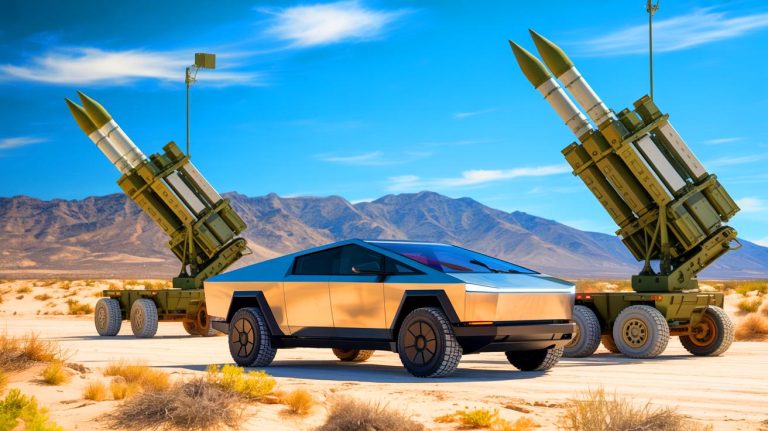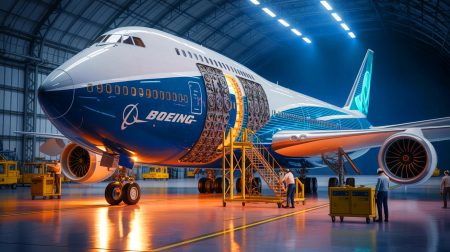| IN A NUTSHELL |
|
The U.S. Air Force’s recent decision to purchase Tesla Cybertrucks for missile practice has raised eyebrows. This unconventional move is aimed at testing these electric vehicles as potential future threats. The military plans to use them as target vehicles at the White Sands Missile Range in New Mexico. Cybertrucks, known for their robust design, are believed to simulate adversaries’ vehicles in conflicts, prompting the Air Force’s interest. This decision is part of a broader acquisition plan involving 33 target vehicles, reflecting the military’s proactive approach to preparing for new challenges.
The Unique Role of Cybertrucks in Military Testing
The Tesla Cybertruck stands out among the various vehicles the Air Force Test Center (AFTC) intends to acquire. Unlike traditional vehicles, Cybertrucks require a formal sole-source justification due to their distinctive features. Their unpainted stainless steel exoskeleton and angular design are unlike the painted steel or aluminum bodies of typical military vehicles. The Air Force considers these elements vital for simulating enemy vehicles that might not sustain conventional damage during strikes.
The Cybertruck’s inclusion aims to support the U.S. Special Operations Command’s Stand Off Precision Guided Munitions (SOPGM) program. This initiative involves air-launched weapons like the AGM-114 Hellfire and GBU-39B/B Laser Small Diameter Bomb. The objective is to prepare for scenarios where adversaries could potentially deploy Cybertrucks in combat zones. The military’s emphasis on realism in testing underscores the importance of understanding how these vehicles withstand precision munitions.
Musk’s “Apocalypse-Proof” Truck Now a Military Test Target
Elon Musk once touted the Cybertruck as “bulletproof” and “apocalypse-proof,” suggesting its potential military applications. However, instead of joining the ranks as an operational vehicle, it has taken on a different role. The Air Force’s choice to use Cybertrucks for testing reflects a belief that adversaries might adopt this robust vehicle in future conflicts. This strategic foresight highlights the military’s commitment to staying ahead of emerging threats.
The Air Force document notes that Cybertrucks are expected to withstand significant impacts, a factor crucial for realistic testing. By replicating real-world scenarios, the military aims to ensure that precision munitions can effectively neutralize such targets. While the document does not specify potential adversaries, the implication is clear: being prepared for all possibilities is essential.
Could the Cybertruck Find a Second Life With Security Forces?
The Tesla Cybertruck, despite its innovative design, has faced challenges in the consumer market. With around 46,000 units sold, it has met with criticism over performance and safety concerns. However, its unique features have attracted interest from security forces worldwide. Modified versions with added armor are being explored for law enforcement and military use, with some agencies already adding them to their fleets.
Reports suggest that customized Cybertrucks have been deployed in military settings, demonstrating their versatility. While these instances remain isolated, they highlight the vehicle’s potential beyond civilian use. The U.S. Air Force’s decision to test Cybertrucks underscores the importance of adapting to new technologies and preparing for unconventional threats.
Military Preparedness in an Evolving Landscape
The Air Force’s proactive approach in acquiring Cybertrucks reflects a broader strategy of military preparedness. As technology evolves, so do potential threats. The military’s decision to test Cybertrucks is a testament to its commitment to adapting to new challenges. This initiative is not just about testing vehicles but understanding the capabilities of precision munitions in diverse scenarios.
With geopolitical dynamics constantly shifting, the military must remain agile in its strategies. The use of Cybertrucks as test targets is a small yet significant part of a larger effort to ensure readiness. The implications of this decision extend beyond the immediate testing phase, raising questions about future military strategies and the role of technology in warfare.
The U.S. Air Force’s decision to use Tesla Cybertrucks as missile practice targets raises intriguing questions about the future of military preparedness. As technology continues to evolve, how will military strategies adapt to address emerging threats and unconventional vehicles in combat scenarios?
Did you like it? 4.6/5 (20)








Why are they using Cybertrucks instead of traditional military vehicles? 🤔
Wow, this is a wild use of technology! Can’t wait to see the results of these tests. 🚀
Seems like a waste of expensive vehicles. Couldn’t they use something cheaper?
Elon Musk must be proud that his “apocalypse-proof” trucks are now military targets. 😂
Does this mean Cybertrucks could be used in actual combat someday?
Can’t believe they are blowing up brand new Tesla trucks. What a way to test durability! 🚗💥
How does a stainless steel exoskeleton compare to military-grade armor?
Are they planning to recycle the pieces after the tests? ♻️